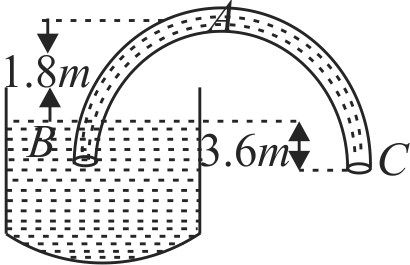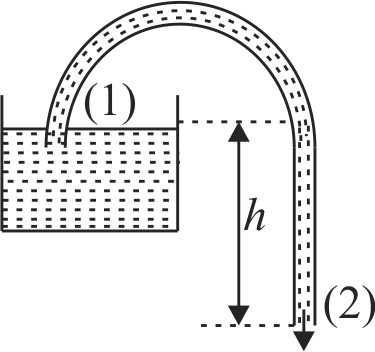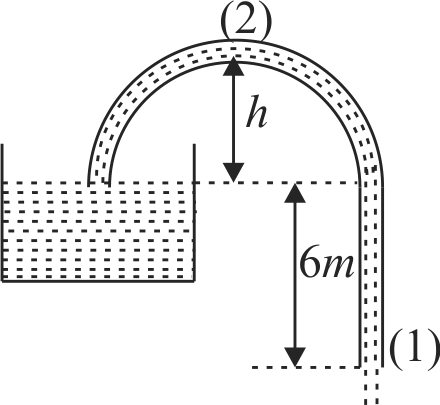360838
A siphon has a uniform circular base of diameter \(8/\sqrt \pi cm\) with its crest \(A,1.8\;m\) above the water level vessel B is of large cross section \(\left( {g = 10\;m/{s^2}} \right)\) and atmospheric pressure \({P_0} = \left( {{{10}^5}\;N/{m^2}} \right)\). Predict the wrong option.
360838
A siphon has a uniform circular base of diameter \(8/\sqrt \pi cm\) with its crest \(A,1.8\;m\) above the water level vessel B is of large cross section \(\left( {g = 10\;m/{s^2}} \right)\) and atmospheric pressure \({P_0} = \left( {{{10}^5}\;N/{m^2}} \right)\). Predict the wrong option.
360838
A siphon has a uniform circular base of diameter \(8/\sqrt \pi cm\) with its crest \(A,1.8\;m\) above the water level vessel B is of large cross section \(\left( {g = 10\;m/{s^2}} \right)\) and atmospheric pressure \({P_0} = \left( {{{10}^5}\;N/{m^2}} \right)\). Predict the wrong option.
360838
A siphon has a uniform circular base of diameter \(8/\sqrt \pi cm\) with its crest \(A,1.8\;m\) above the water level vessel B is of large cross section \(\left( {g = 10\;m/{s^2}} \right)\) and atmospheric pressure \({P_0} = \left( {{{10}^5}\;N/{m^2}} \right)\). Predict the wrong option.


